What Are Bacteria And Their Characteristics?
Bacteria are single-celled microorganisms that can be found virtually everywhere, from the soil to the human body. They come in a variety of shapes and sizes, ranging from spherical and cylindrical to spiral and even star-shaped. Despite their small size, bacteria play a pivotal role in sustaining life on Earth.
One of the most distinguishing characteristics of bacteria is their ability to reproduce rapidly through a process called binary fission. This allows them to colonize and thrive within diverse environments.
- Cell Structure: Bacteria are characterized by a simple cellular structure and lack any internal membrane-bound organelles, including a nucleus.
- Metabolism: Bacteria are metabolically diverse, with some strains being able to survive in extreme environments such as acid mines or hot springs.
- Motility: Some bacteria have the ability to move using flagella or through a gliding mechanism.
In addition to their diverse biological characteristics, species of bacteria have also been classified based on color, shape, and size. Furthermore, the genetic material of bacteria is unique and different from that of other organisms, allowing for the possibility of developing targeted treatments and vaccines for diseases caused by these organisms.
| Shape | Size | Examples |
|---|---|---|
| Spherical | 0.5 – 5 micrometers | Staphylococcus, Streptococcus |
| Rod-shaped | 1 – 10 micrometers | E. coli, Salmonella |
| Spiral | 3 – 5 micrometers | Treponema, Borrelia |
While bacteria can be beneficial, such as in the production of food or in the digestion of food in the guts of animals, some species can cause illnesses and infections. It is important to understand the characteristics and behaviors of bacteria to better identify and combat diseases caused by these organisms.
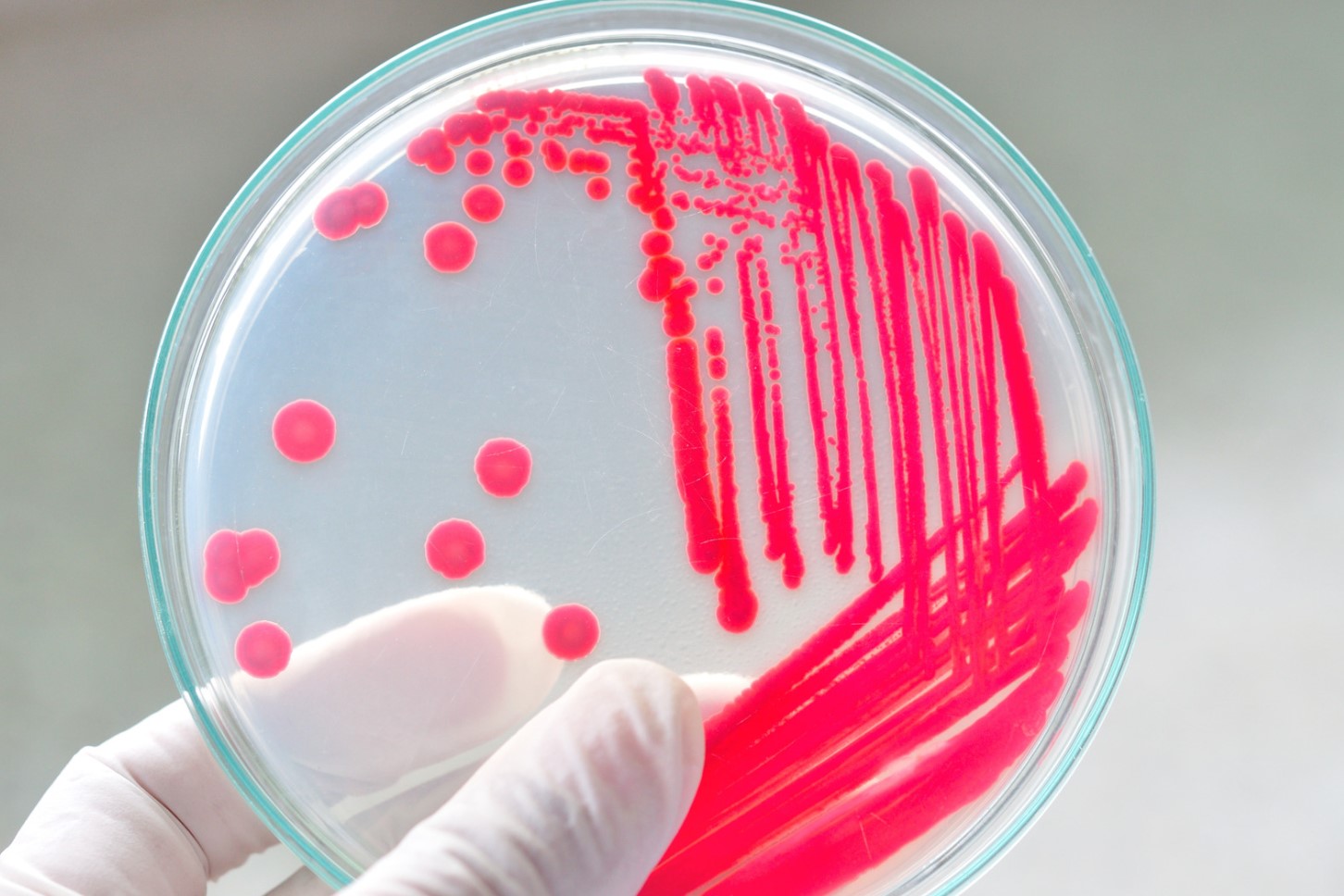
How Do Bacteria Infect Us?
Bacteria are a type of microorganisms that are present in our environment, some of which can cause harm to living organisms. Bacterial infections can range from a mild disease to severe, life-threatening conditions. But have you ever wondered how bacteria infect us? Let’s explore the ways in which bacteria enter our bodies and cause infections.
Direct Contact: Bacteria can spread from one person to another through direct contact. This can occur through physical contact such as touching, kissing or sexual activity. It can also happen when an infected person sneezes or coughs, and the bacteria are released into the air. These bacteria can be inhaled by a healthy person, leading to an infection.
Fecal-Oral Route: This type of infection occurs when a person ingests food or water contaminated with human or animal feces containing harmful bacteria. This can happen due to poor hygiene practices where individuals do not wash their hands properly before handling food, or consuming food that has been prepared in unsanitary conditions.
Insect Bites: Insects like ticks, fleas, and mosquitoes can carry harmful bacteria and spread them to humans through their bites. Lyme disease, which is caused by a bacterium called Borrelia burgdorferi, is transmitted to humans by the bite of infected ticks. Similarly, mosquitoes can transmit malaria, which is caused by a bacterium called Plasmodium falciparum.
- Waterborne Transmission: Another way in which bacteria can infect us is through contaminated water. Water sources like lakes, rivers, and wells can be contaminated with harmful bacteria, which can lead to infections like cholera and dysentery.
- Airborne Transmission: Bacteria can also spread through the air, especially in closed spaces. For example, the bacteria that cause tuberculosis can be spread when an infected person coughs or sneezes, releasing bacteria into the air. These bacteria can then be inhaled by others, leading to an infection.
It is important to note that not all bacteria are harmful, and some are even beneficial to our health. However, it is crucial to be aware of the ways in which harmful bacteria can infect us and take necessary precautions to prevent infections.
Types Of Bacteria That Cause Diseases
Bacteria are small, single-celled organisms that are found nearly everywhere on Earth. While many bacteria are harmless, some can cause illnesses ranging from minor infections to serious diseases. In this blog post, we will explore the different types of bacteria that can cause diseases.
One of the most well-known types of disease-causing bacteria is Streptococcus. This bacteria can cause a variety of infections, ranging from strep throat to pneumonia. Another common type of bacteria is Escherichia coli, which is typically found in the intestines and can cause food poisoning.
- Neisseria gonorrhoeae is a type of bacteria that is responsible for the sexually transmitted infection gonorrhea.
- Salmonella is a type of bacteria that can be found in undercooked chicken or eggs and can cause food poisoning.
Lyme disease is a bacterial infection that is spread by ticks. The bacteria responsible for this disease is Borrelia burgdorferi. Another type of bacteria spread by ticks is Rickettsia, which can cause Rocky Mountain spotted fever.
| Bacteria | Disease |
|---|---|
| Streptococcus | Strep throat, pneumonia |
| Escherichia coli | Food poisoning |
| Neisseria gonorrhoeae | Gonorrhea |
| Salmonella | Food poisoning |
| Borrelia burgdorferi | Lyme disease |
| Rickettsia | Rocky Mountain spotted fever |
Other common types of disease-causing bacteria include Haemophilus influenzae, which can cause ear infections and pneumonia, and Mycobacterium tuberculosis, which causes tuberculosis. Additionally, Staphylococcus aureus is a type of bacteria that can cause skin infections.
Understanding the different types of bacteria that can cause diseases is an important step in preventing and treating infections. With proper hygiene practices and timely medical intervention, many bacterial infections can be effectively managed.
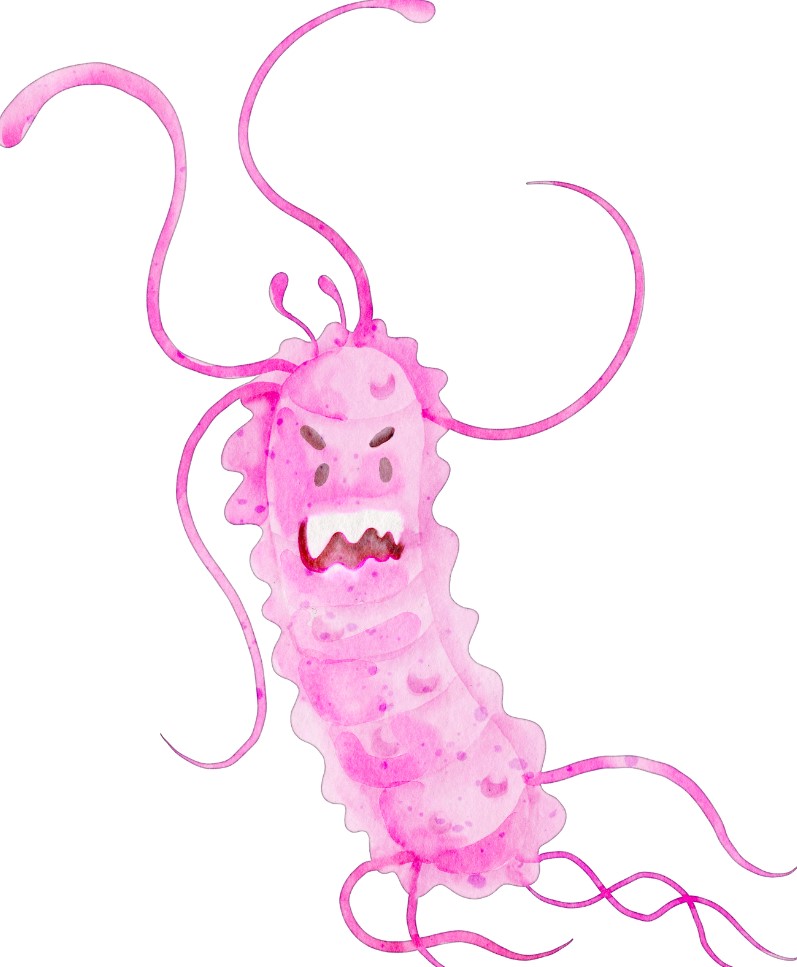
How Bacteria Spread From Person To Person
Bacteria are microorganisms that can be found everywhere on earth – in soil, water, air, and even in our bodies. They come in different shapes and sizes, and while some of them are harmless, there are others that can cause diseases. Bacteria have the ability to spread from person to person, and this can happen in different ways.
One way that bacteria can spread from person to person is through direct contact. This means that an infected person can pass on the bacteria to another person by touching them. This can happen when people shake hands, hug, or even kiss. Additionally, bacteria can spread through sexual contact, such as during genital, oral, and anal sex.
Another way that bacteria can spread is through indirect contact. In this case, the bacteria are passed from one person to another through a contaminated object or surface. For example, if an infected person sneezes or coughs, the bacteria can be spread through the air and land on surfaces such as doorknobs, countertops, or utensils. If someone else comes into contact with these surfaces and then touches their mouth, nose, or eyes, they can become infected.
| Types of Bacteria that can spread from person to person | Symptoms of Bacterial Infections |
|---|---|
| Streptococcus pyogenes – causes strep throat | Fever |
| Neisseria gonorrhoeae – causes gonorrhea | Painful urination, discharge from genitals |
| Salmonella – causes food poisoning | Nausea, vomiting, diarrhea |
| Mycobacterium tuberculosis – causes tuberculosis | Coughing, fever, weight loss |
It’s important to note that not all bacteria are harmful, and some people can carry bacteria without showing any symptoms. However, some people may be more vulnerable to bacterial infections than others. For instance, young children, elderly people, and those with weakened immune systems may be more susceptible to infections.
To prevent the spread of bacteria from person to person, it’s important to practice good hygiene. This includes washing your hands regularly, covering your mouth when sneezing or coughing, and avoiding close contact with people who are sick. It’s also a good idea to stay up-to-date on vaccinations and to avoid sharing personal items such as towels, utensils, and toothbrushes.
In conclusion, bacteria can spread from person to person in different ways, both through direct contact and indirect contact. While some bacteria are harmless, others can cause serious illnesses. By practicing good hygiene and taking preventative measures, we can reduce the risk of bacterial infections and protect ourselves and others from harm.
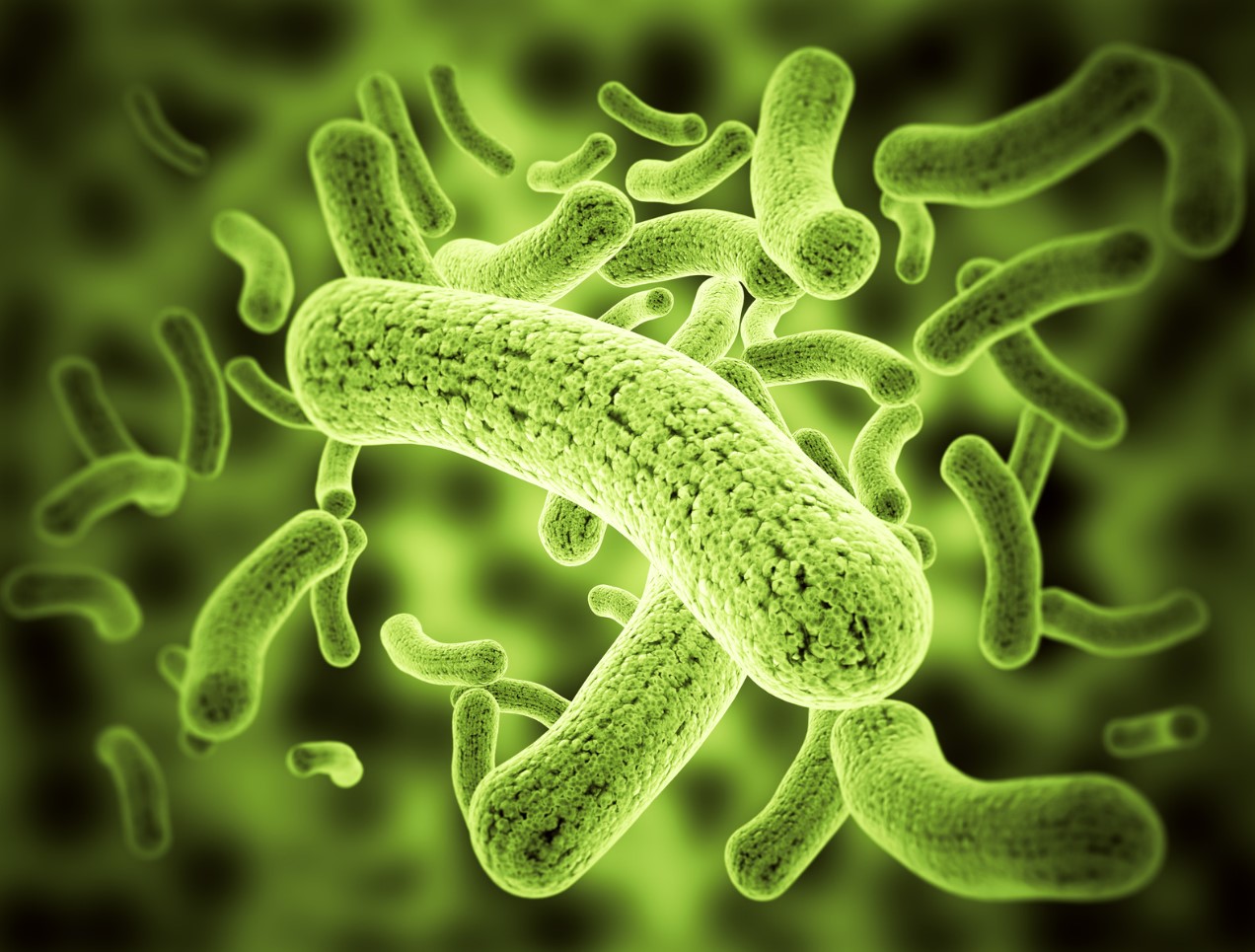
Understanding Bacterial Infections
Bacterial infections are caused by the growth and multiplication of harmful microorganisms in different parts of the body. They can range from mild to life-threatening, depending on the type and severity of infection. These infections can affect anyone, regardless of age, gender, or ethnicity. Understanding bacterial infections is essential to prevent their occurrence and manage the symptoms effectively.
Bacteria are single-celled organisms that can live in diverse environments, such as soil, water, air, and inside other animals and humans. They have a simple structure without a nucleus and can reproduce rapidly by dividing into two identical cells. Bacteria have some characteristics that make them different from other microorganisms, such as viruses and fungi. For instance, they can produce their food, and they have a cell wall that enables them to withstand harsh conditions.
Some bacteria can cause various diseases, depending on their type and the part of the body that they infect. For example, Streptococcus bacteria can cause tonsillitis, pharyngitis, and skin infections, while Escherichia coli resides harmlessly in the gut but can cause urinary tract infections and meningitis when it enters the bloodstream. Understanding the types of bacteria that cause infections is crucial for proper diagnosis and treatment.
- Common types of bacterial infections include:
- Staphylococcus infections (e.g., boils, cellulitis, pneumonia, toxic shock syndrome)
- Streptococcus infections (e.g., pharyngitis, impetigo, scarlet fever)
- Salmonella infections (e.g., food poisoning)
- Escherichia coli infections (e.g., urinary tract infections, diarrhea)
- Shigella infections (e.g., dysentery)
Bacterial infections can spread from person to person through direct contact, such as kissing, sexual intercourse, or touching contaminated surfaces. They can also spread through the air, water, and food if they enter the body through the mouth, nose, or eyes. Understanding how bacteria spread can help to prevent their transmission and reduce the risk of infection.
Additionally, identifying bacterial infections is crucial for proper treatment. Common symptoms of bacterial infections include fever, chills, fatigue, body aches, coughing, and diarrhea. However, some bacterial infections may have atypical symptoms or no symptoms at all, making them difficult to diagnose. Understanding the importance of bacterial identification can help healthcare professionals prescribe the appropriate antibiotics or other medications effectively.
| Antibiotics that are commonly used to treat bacterial infections include: |
|---|
| Penicillin |
| Cephalosporins |
| Macrolides |
| Fluoroquinolones |
| Tetracyclines |
However, the overuse and misuse of antibiotics can contribute to bacterial resistance, where bacteria adapt and become resistant to antibiotics’ effects. Understanding the role of antibiotics in bacterial infections and their limitations is essential to prevent antibiotic resistance and promote better healthcare practices.
Overall, understanding bacterial infections is crucial for better management, prevention, and treatment. By recognizing the types of bacteria that cause infections, how they spread, and the available treatment options, individuals can take proactive measures to protect themselves and their communities from bacterial infections.
Importance Of Bacterial Identification
Bacteria are microorganisms that play a significant role in our lives as well as the environment. Their identification is significant for many reasons, like understanding and treating bacterial infections or preventing contamination of food, water, and other resources.
The identification of bacteria requires specific laboratory techniques and tests that use multiple factors like growth patterns, staining properties, and genetic makeup. With accurate identification, public health officials can track and respond to outbreaks of bacterial infections.
- Tracking bacterial outbreaks
Bacterial identification plays a crucial role in tracking outbreaks of infectious diseases in the community. Identifying the strain of bacteria causing the infection can help public health officials determine the source of the outbreak and implement preventative measures to contain it. The precise identification of the pathogen causing illness allows timely therapy and tracing the source of infection. This approach could curb the spread of the illness and even save lives in some instances.
- Antibiotic resistance
Bacterial identification helps healthcare providers determine which antibiotics will be effective against a particular bacterial strain. This is crucial in preventing the spread of antibiotic-resistant bacteria, leading to better patient outcomes. Additionally, identifying the strain of bacteria causing illness allows for appropriate use of broad-spectrum antibiotics and preventing their overuse. Reducing antibiotic misuse helps control antibiotic resistance, reducing healthcare costs for patients, and promoting the development of new antibiotics.
- Food safety
Bacterial identification is significant in holding the food industry accountable for safe food production. Since the identification of pathogens in food requires several testing procedures, bacterial identification is critical in preventing foodborne illnesses from spreading. For instance, restaurants or suppliers could be required to test and verify the bacterial content of the food they sell or serve to minimize the risk of illness.
| Conclusion |
|---|
| The importance of bacterial identification is multifaceted, from tracking outbreaks of infectious diseases to preventing contamination of food and water resources. Improved identification methods will lead to improved public health outcomes, more focused antibiotic prescribing practices, and better food safety standards. Healthcare practitioners, scientists, and policymakers must work together to prioritize funding and research into this vital area to ensure a better future for us all. |
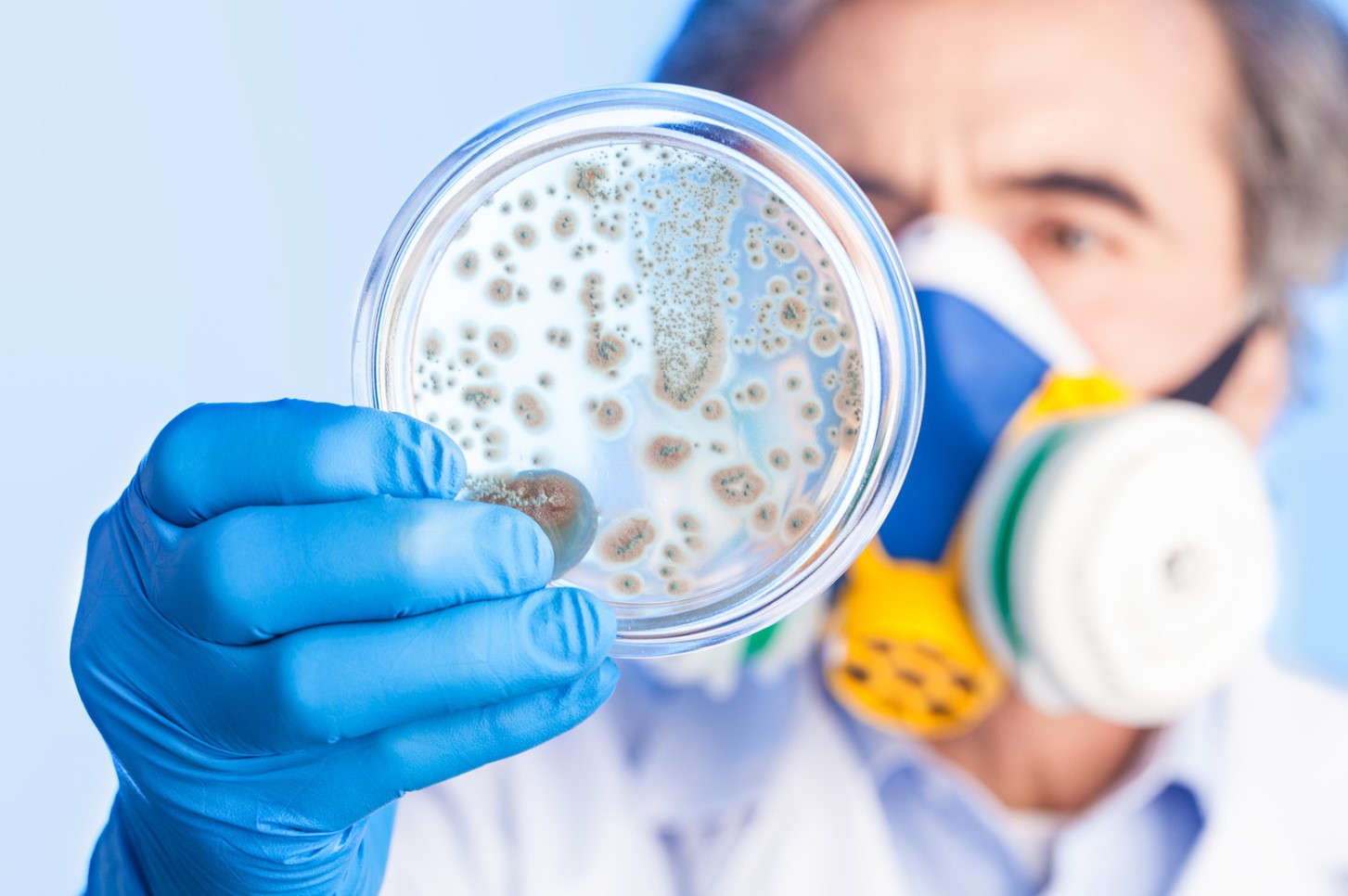
Common Symptoms Of Bacterial Infections
Bacterial infections are a common condition that can affect anyone. When bacteria enter the body, they can cause a range of symptoms depending on the type of bacteria and the area of the body affected. While some bacterial infections may be mild and resolve on their own, others can be severe and life-threatening. In this post, we will discuss the common symptoms of bacterial infections that you should be aware of.
- Fever: One common symptom of a bacterial infection is a high fever. Fever is your body’s way of fighting off an infection, and it is caused by a release of chemicals from your immune system that raise your body temperature. A fever that persists for more than a few days may be a sign of a bacterial infection.
- Pain: Another common symptom of bacterial infections is pain. This can include joint pain, muscle aches, headaches, and stomach pain. Pain can be localized or widespread, depending on the type of infection and the area of the body affected.
- Fatigue: Many bacterial infections can cause fatigue or weakness. This is because your body is using its energy to fight off the infection, leaving you feeling tired and drained. If you feel tired even after getting enough rest, it may be a sign of a bacterial infection.
Bacterial infections can also cause a range of other symptoms, such as coughing, difficulty breathing, skin rashes, and diarrhea. If you are experiencing any of these symptoms, it is important to see a healthcare provider for diagnosis and treatment. If left untreated, bacterial infections can lead to serious complications and even death.
| Bacterial Infection | Common Symptoms |
|---|---|
| Pneumonia | Chest pain, coughing, difficulty breathing, fever |
| Urinary tract infection | Painful urination, frequent urination, fever, fatigue |
| Meningitis | Headache, neck stiffness, fever, confusion |
| Salmonella infection | Diarrhea, fever, abdominal pain, nausea, vomiting |
It is important to take steps to prevent bacterial infections, such as washing your hands regularly, avoiding close contact with sick people, and staying up to date on vaccinations. If you are experiencing symptoms of a bacterial infection, seek medical attention as soon as possible to receive appropriate diagnosis and treatment.
Bacterial Proteins That Cause Illness
Bacteria are some of the most adaptable organisms on the planet. They can survive in almost any environment, from deep sea vents to the human body. Although many bacteria are beneficial to humans, others can cause serious illnesses. One way bacteria cause harm is through the production of proteins that can attack our cells or disrupt our bodily processes. In this post, we’ll explore the bacterial proteins that cause illness.
One of the most well-known bacterial proteins is botulinum toxin, produced by the bacterium Clostridium botulinum. This protein is responsible for the deadly disease botulism. When ingested, the toxin binds to nerve endings, preventing the release of acetylcholine, a neurotransmitter that signals muscle contraction. This results in paralysis of the muscles, including those used for breathing.
- Another bacterial protein that can cause illness is cholera toxin, produced by the bacterium Vibrio cholerae. Cholera is a diarrheal disease that can be fatal if left untreated. The toxin causes the cells lining the small intestine to secrete large amounts of fluid, leading to severe dehydration.
- Shiga toxin is produced by several types of bacteria, including Escherichia coli (E. coli) and Shigella dysenteriae. When these bacteria infect the body, they release the toxin, which attacks the cells lining the intestines and can lead to bloody diarrhea and, in severe cases, kidney failure.
Bacteria can also produce proteins that interfere with the immune system. For example, the protein M protein, produced by Streptococcus pyogenes, can help the bacteria evade detection by the immune system. This makes it more difficult for the body to mount an effective response to the infection, leading to a higher risk of complications such as rheumatic fever or necrotizing fasciitis.
Understanding bacterial proteins is crucial for developing treatments and vaccines for bacterial infections. Researchers are constantly working to identify new bacterial proteins and create therapies that can target them specifically. By gaining a deeper understanding of how bacteria cause illness, we can better protect ourselves against these harmful organisms.
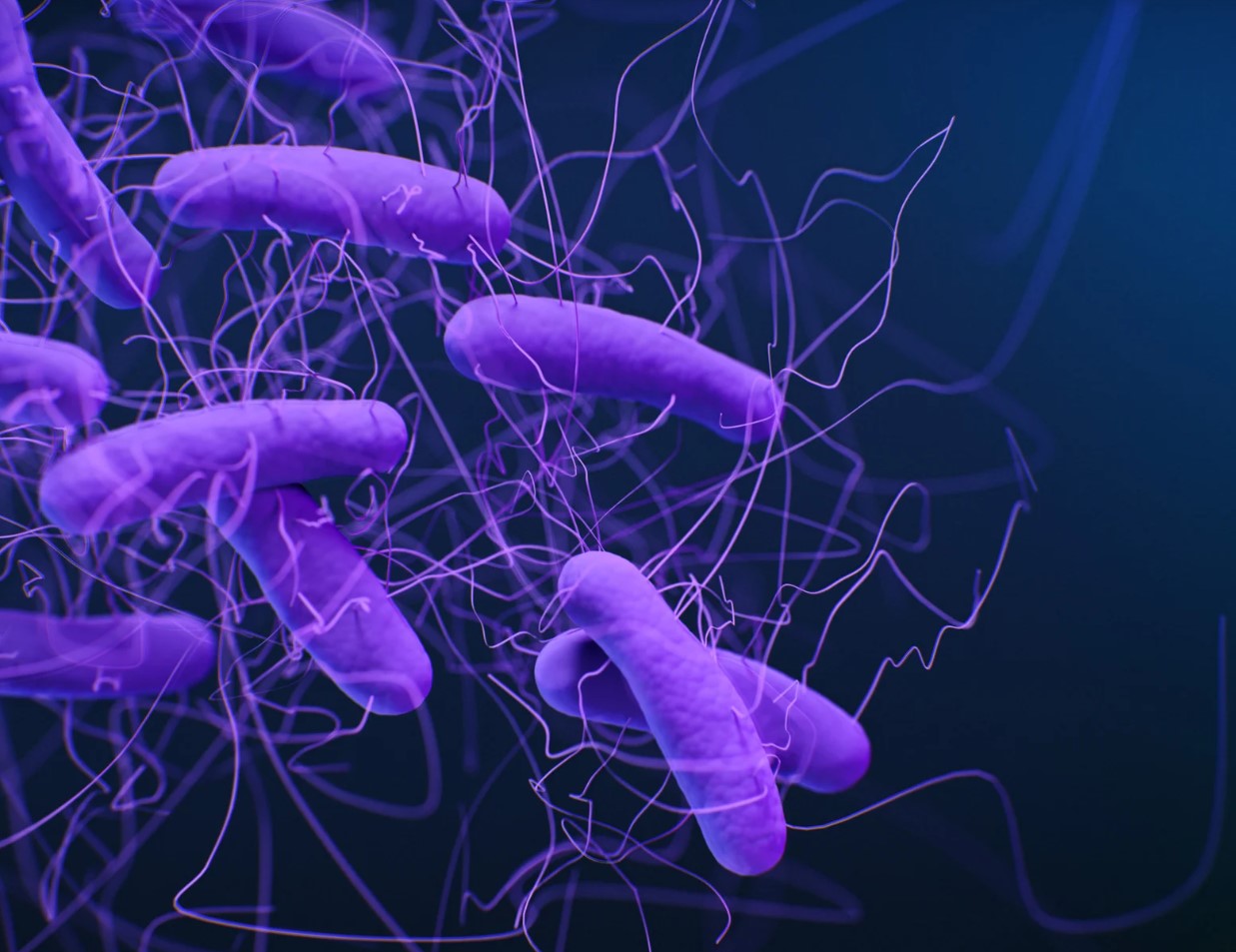
Antibiotics And Bacterial Resistance
Antibiotics are some of the most common medications prescribed by doctors all over the world. They are used to kill bacterial infections and prevent the spread of various diseases. However, bacterial resistance is becoming an increasing problem as some bacteria develop the ability to resist antibiotics.
Bacterial resistance is mainly caused by overuse or misuse of antibiotics. When antibiotics are used excessively or unnecessarily, bacteria develop resistance as they are exposed to the antibiotics repeatedly. This can cause various serious illnesses that can even become life-threatening.
The importance of understanding and preventing bacterial resistance cannot be understated. There are several ways to prevent bacterial resistance such as reducing the usage of antibiotics unless a bacterial infection is confirmed, following the doctor’s instructions when taking antibiotics, and completing the entire course of antibiotics even if the symptoms disappear.
- Another important step to prevent bacterial resistance is practicing proper hygiene by regularly washing your hands and cleaning surfaces and utensils effectively.
- It is also important to understand that antibiotics are not effective against viral infections such as the common cold or flu and that overuse of antibiotics in such cases is one of the main causes of bacterial resistance.
- When antibiotics are prescribed by a doctor, it is also important to inform them of any allergies, previous antibiotic use, or any other medications currently being consumed to prevent any complications or reactions.
In conclusion, antibiotic resistance is a growing concern and it is vital that we take necessary steps to prevent it. Maintaining proper hygiene practices, reducing antibiotic usage, and completing the entire course of antibiotics are some of the most important steps to prevent bacterial resistance. Following these guidelines will not only help individuals but also contribute to the collective effort to prevent the spread of antibiotic-resistant bacteria.
How To Prevent Bacterial Infections
Bacterial infections can be life-threatening, and it is essential to take appropriate measures to prevent them. By following certain practices, you can minimize the chances of getting infected by bacteria. In this blog post, we will discuss some of the preventive measures you can take to avoid bacterial infections.
- Wash Your Hands: The most effective way to prevent the spread of bacteria is by washing your hands regularly. Always wash your hands before and after eating, using the restroom, and touching public surfaces.
- Cover Your Mouth And Nose: When you cough or sneeze, always cover your mouth and nose with a tissue or your elbow. This will prevent the spread of bacteria.
- Practice Good Hygiene: Maintain good hygiene habits, such as taking regular showers, using clean towels and clothes, and brushing your teeth twice a day. This will prevent the accumulation of bacteria on your body.
Another way to prevent bacterial infections is by avoiding the consumption of contaminated food and water. Always ensure that the food you eat is fresh and properly cooked. Drinking clean and safe water is also crucial for preventing bacterial infections.
- Use Antibiotics Properly: You should never abuse antibiotics, as this can lead to antibiotic resistance. Always take antibiotics as directed by your healthcare provider, and never share them with others.
- Stay Up To Date With Vaccinations: Vaccinations can help prevent bacterial infections such as meningitis, pneumonia, and tetanus. Consult your healthcare provider to ensure that you are up to date with your vaccinations.
Lastly, it is essential to maintain a healthy lifestyle to prevent bacterial infections. This includes eating a well-balanced diet, getting enough sleep, and exercising regularly. A healthy lifestyle will boost your immune system, making you less susceptible to bacterial infections.
| Preventive Measures | Description |
|---|---|
| Wash Your Hands | The most effective way to prevent the spread of bacteria is by washing your hands regularly |
| Cover Your Mouth And Nose | When you cough or sneeze, always cover your mouth and nose with a tissue or your elbow. This will prevent the spread of bacteria |
| Practice Good Hygiene | Maintain good hygiene habits, such as taking regular showers, using clean towels and clothes, and brushing your teeth twice a day. This will prevent the accumulation of bacteria on your body |
| Use Antibiotics Properly | You should never abuse antibiotics, as this can lead to antibiotic resistance. Always take antibiotics as directed by your healthcare provider, and never share them with others |
| Stay Up To Date With Vaccinations | Vaccinations can help prevent bacterial infections such as meningitis, pneumonia, and tetanus. Consult your healthcare provider to ensure that you are up to date with your vaccinations |
By following these preventive measures, you can reduce your chances of getting infected by bacteria. Always consult your healthcare provider if you suspect that you have a bacterial infection. Early diagnosis and treatment can help prevent serious complications and improve your chances of recovery.
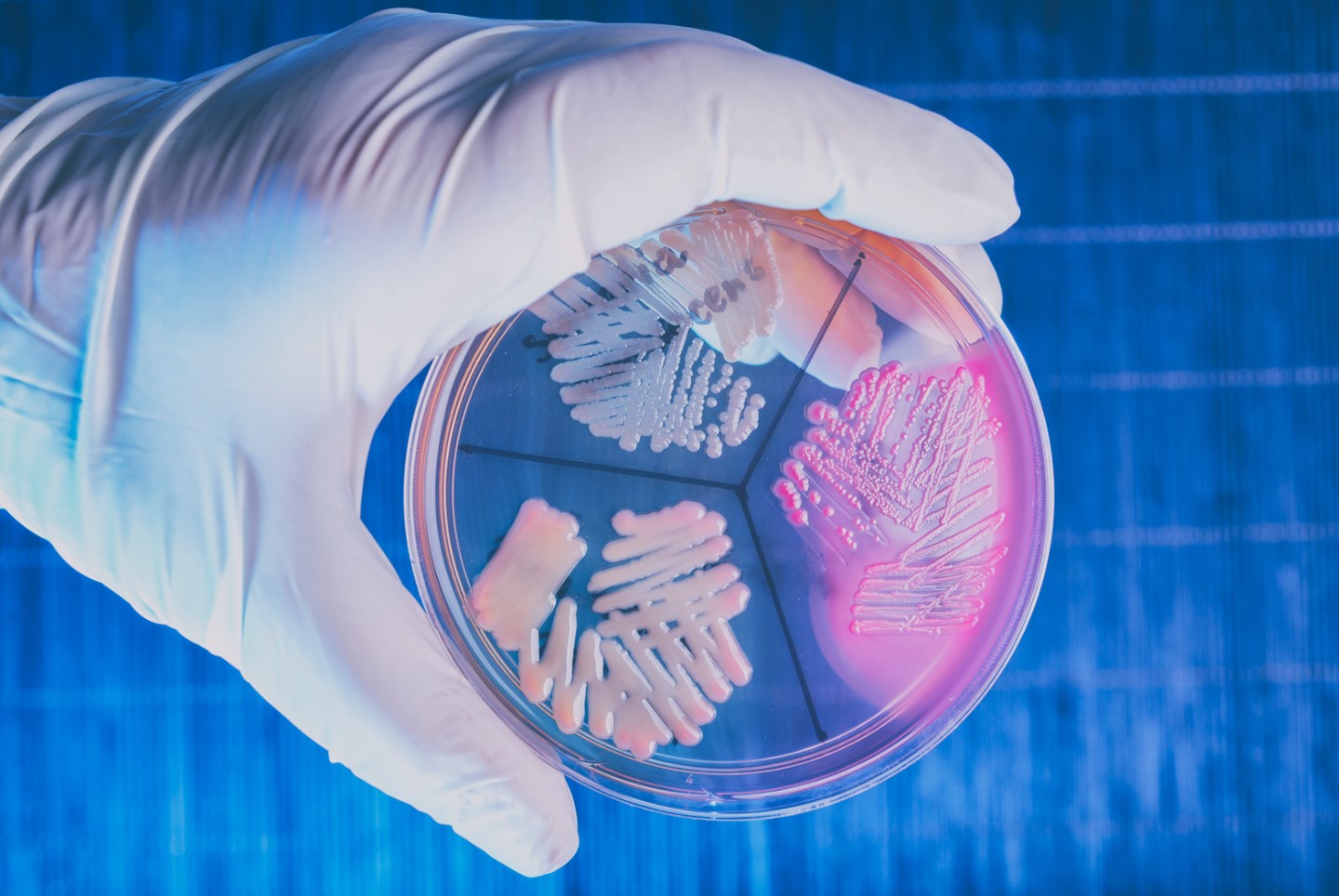
Bacterial Vaccines And Their Significance
Bacterial vaccines play a significant role in preventing various infectious diseases caused by bacteria. Vaccines have been used for centuries to protect humans from diseases that are fatal or cause long-term harm. The aim of a vaccine is to boost immunity to a specific disease, and bacterial vaccines achieve this goal by introducing a small part of the bacteria or a weakened form of the bacteria into the body. Bacterial vaccines are critical in public health interventions to control and eliminate the spread of bacterial infections.
There are two fundamental types of bacterial vaccines: whole-cell vaccines and acellular vaccines. Whole-cell vaccines use weakened or killed bacteria to stimulate an immune response, while acellular vaccines use purified components of a bacterium instead of the entire organism. Acellular vaccines are often preferred over whole-cell vaccines as they elicit a better immune response with few side effects.
Bacterial vaccines have successfully eradicated many fatal diseases worldwide. For example, the vaccine for tetanus has almost eliminated the incidence of that disease in developed countries. Similarly, the vaccine for tuberculosis limits cases of severe illness and death from this debilitating disease in endemic regions. Bacterial vaccines have also reduced morbidity, mortality, and disease transmission from some of the most harmful diseases, such as meningitis, streptococcal pneumonia, and pertussis.
- A key challenge in bacterial vaccine development is the emergence of antibiotic-resistant bacteria strains that are hard to defeat with traditional antibiotics.
- Bacterial resistance occurs when bacteria develop a resistance to antibiotics by acquiring resistant genes.
- As bacterial pathogens evolve, it is vital to develop novel vaccines or improve current ones to prevent the spread of bacterial diseases and maintain public health.
In conclusion, bacterial vaccines are essential in preventing bacterial infections, and their importance in maintaining public health cannot be overemphasized. It is necessary to develop effective vaccines and continue to improve existing ones to combat antibiotic resistance and the emergence of new bacterial strains. By doing so, we can continue to reduce the incidence of infectious diseases and improve overall health outcomes for individuals and communities worldwide.
Bacterial Infections And Immune System Response
Bacterial infections are a common occurrence in our daily lives. They can be caused by various types of bacteria and can affect different parts of our body. When bacteria enter our body, our immune system is triggered to fight against them. Our immune system is made up of a complex network of cells, tissues, and organs that work together to defend our body against harmful foreign invaders such as bacteria.
When our immune system detects the presence of bacteria, it sends out white blood cells to attack and destroy the intruders. These white blood cells can detect specific bacterial proteins called antigens. Antigens are molecules that are present on the surface of the bacteria, which our immune system recognizes as foreign and dangerous.
- There are several ways in which our immune system responds to bacterial infections.
- One way is by producing antibodies that target specific antigens of the bacteria. These antibodies can bind to the antigens on the surface of the bacteria, tagging them for destruction by other immune cells.
- Another way our immune system fights bacterial infections is by producing cytokines. Cytokines are signaling molecules that help to coordinate the immune response by attracting other immune cells to the site of infection.
However, sometimes the bacterial infection can be too strong for our immune system to fight off alone. In such cases, it may be necessary to use antibiotics to kill the bacteria.
| Common bacterial infections | Symptoms | Treatment |
|---|---|---|
| Staph infection | Redness, swelling, pain | Antibiotics |
| Strep throat | Sore throat, fever, headache | Antibiotics |
| Pneumonia | Fever, cough, chest pain | Antibiotics |
It is important to note that the overuse of antibiotics can lead to bacterial resistance. Bacterial resistance occurs when bacteria evolve strategies to resist the effects of antibiotics. This can make it harder to treat bacterial infections in the future.
In conclusion, our immune system plays a crucial role in fighting bacterial infections. However, it is important to take measures to prevent infections and to use antibiotics responsibly to avoid the development of bacterial resistance.
Uncommon Bacterial Infections
Bacteria are tiny organisms that can be found almost everywhere – in soil, water, air, and even inside our bodies. While some bacteria are beneficial and necessary for our well-being, there are others that can cause serious infections and diseases. Most people are familiar with common bacterial infections like strep throat and urinary tract infections, but there are also some uncommon bacterial infections that can be equally dangerous. In this blog post, we will discuss some of these lesser-known bacterial infections and their effects on human health.
1. Brucellosis: Brucellosis is a bacterial infection that is usually contracted from infected animals. It can cause flu-like symptoms such as fever, headache, muscle aches, and fatigue. In some cases, it can also affect the reproductive system, liver, and spleen. Brucellosis is rare in the United States, but it is still common in some parts of the world where livestock is not properly controlled for the disease.
2. Melioidosis: Melioidosis is a bacterial infection that is primarily found in Southeast Asia and Northern Australia. It is caused by the bacterium Burkholderia pseudomallei, which is found in soil and water. Melioidosis can cause a wide range of symptoms, from mild skin infections to life-threatening pneumonia and sepsis. It is often misdiagnosed due to its unpredictable nature and its similarity to other diseases.
- Lyme disease: Lyme disease is a bacterial infection that is spread by ticks. It is most common in the northeastern United States, but it can also be found in other parts of the country. Lyme disease can cause a number of symptoms, including fever, headache, joint pain, and skin rash. If left untreated, it can lead to more serious complications such as heart and nerve problems.
- Mycobacterium marinum infection: Mycobacterium marinum is a bacterium that is found in water sources such as pools, aquariums, and lakes. It can cause infections in humans when it enters through a cut or scrape on the skin. Symptoms of Mycobacterium marinum infection include redness, swelling, and pain around the site of infection. In severe cases, it can lead to joint and bone infections.
Uncommon bacterial infections can pose a challenge to both patients and healthcare providers. If you experience any symptoms of infection, it is important to seek medical attention immediately. Early diagnosis and treatment can prevent serious complications and improve your chances of a full recovery.
Bacterial Infections İn Different Age Groups
Hey there! Are you concerned about bacterial infections but are unsure if age plays a role? Let’s take a closer look at how bacteria affect different age groups.
Babies and Toddlers: Newborns and young children are especially vulnerable to bacterial infections. Their immune systems are still developing, making it easier for bacteria to enter their bodies and cause illness. Some common bacterial infections in this age group include meningitis, pneumonia, and urinary tract infections. As a result, it is important for parents and caregivers to take appropriate measures to prevent the spread of bacteria, such as washing hands frequently and properly preparing food and bottles.
Children and Adolescents: As children grow older, they continue to face a higher risk of bacterial infections than adults. In school, they are exposed to many different types of bacteria and viruses, making it more likely for them to become sick. Common bacterial infections in this age group include strep throat, ear infections, and skin infections. Encouraging good hygiene practices, such as regular handwashing and covering coughs and sneezes, can help reduce the spread of bacteria.
Adults: Bacterial infections are less common in healthy adults, but they can still occur. Certain types of bacteria, such as staphylococcus aureus, can cause skin infections or even more serious conditions like bloodstream infections. Adults with weakened immune systems, such as those with chronic illnesses or who are undergoing chemotherapy, are at a higher risk for bacterial infections. Proper wound care and timely treatment of infections can help prevent the spread of bacteria.
- Takeaway:
Bacterial infections can affect individuals of all ages, but certain age groups are more vulnerable than others. Newborns and young children have undeveloped immune systems, putting them at a higher risk for bacterial infections. Children and adolescents may be exposed to a high number of bacteria, especially in schools. Adults can also be affected by bacterial infections, particularly if they have a weakened immune system. It is crucial to take measures to prevent the spread of bacteria, such as practicing good hygiene and timely treatment of infections.
The Future Of Bacterial Research And Treatment
Bacterial infections have been a major health concern for many years. The emergence of bacterial strains that are resistant to antibiotics has made it more challenging to treat these infections. The future of bacterial research and treatment holds hope for new approaches to combating these infections.
One area of research that holds promise for the future of bacterial treatment is bacteriophages. Bacteriophages are viruses that infect bacteria and can be used to specifically target and kill the bacteria causing the infection. This approach could be particularly useful in treating antibiotic-resistant bacterial infections that cannot be treated with traditional antibiotics.
Another area of research that is expected to have a significant impact on the future of bacterial treatment is the development of new antibiotics. Researchers are exploring new compounds and combinations of existing antibiotics to create more effective treatments. They are also investigating alternative ways of delivering antibiotics, such as through the use of nanoparticles or alternative delivery methods.
- Research is also underway to identify new targets for antibiotics. By targeting new bacterial proteins, researchers could create antibiotics that are less likely to cause resistance. This could help to prolong the effectiveness of antibiotics for treating bacterial infections.
- Improved diagnostic tests are also expected to have a significant impact on the future of bacterial treatment. Faster and more accurate diagnostic tests could help to identify bacterial infections more quickly, allowing for earlier treatment and better outcomes for patients.
Overall, the future of bacterial research and treatment looks promising. While antibiotic-resistant bacteria are a growing concern, researchers are exploring a variety of approaches to combat these infections. From new antibiotics and targeted therapies to improved diagnostic tests, the future of bacterial treatment is likely to be shaped by ongoing research and innovation.